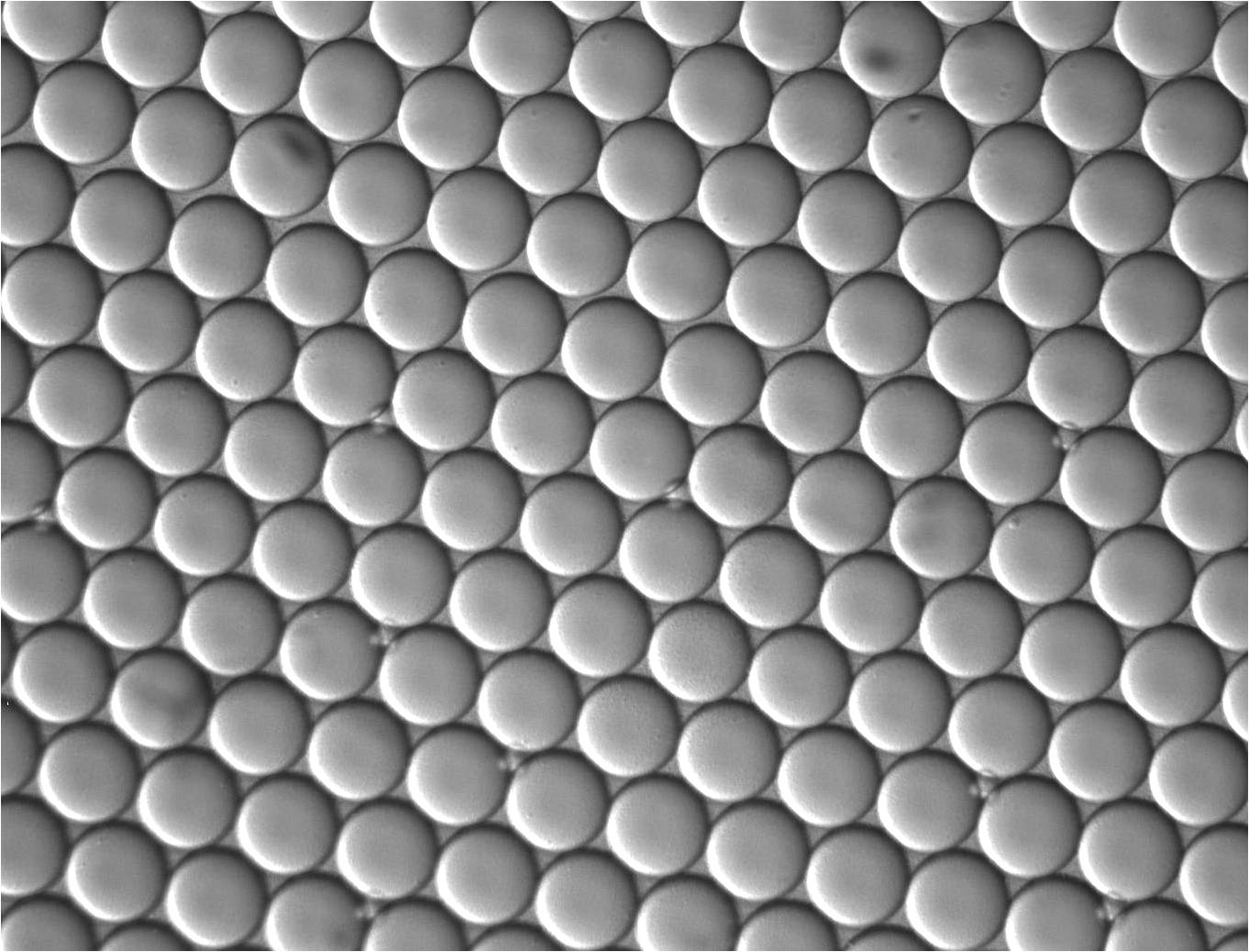Microdroplets: Reinjection
Droplets being reinjected into a microfludic channel
Droplet reinjection is necessary when an emulsion formed in a previous step must be injected into a microfluidic device for additional processing. This is usually needed when performing multistep reactions, in which several compounds must be added to the drops, or in which a large library of compounds must be reacted with another compound. To ensure that the microfluidic devices operate properly, it is important to reinject the drops into the device in a uniform fashion. This can be achieved by removing most of the continuous-phase solution from the emulsion, so that the drops pack together; under the microscope, such emulsions appear as a hexagonally-packed "crystal" of uniform spheres, as shown in this image:
Hexagonally-packed microdroplets
When a close-packed emulsion is introduced into a microfluidic device, the contact forces between the drops cause them to order and flow through the device regularly; the drops can then be spaced by adding more fluid from another channel, as shown in this movie:
One of the challenges when reinjecting drops is that they are fragile. Drops are composed entirely of liquid, with only a thin coating of surfactant stabilizing them. If they are made to flow too quickly past obstacles or around dust particles, they can coalesce or split into pieces. This makes properly designing filtration channels that remove dust without harming the drops critically important. Thankfully, there are several effective filtration designs available for droplet reinjection.

